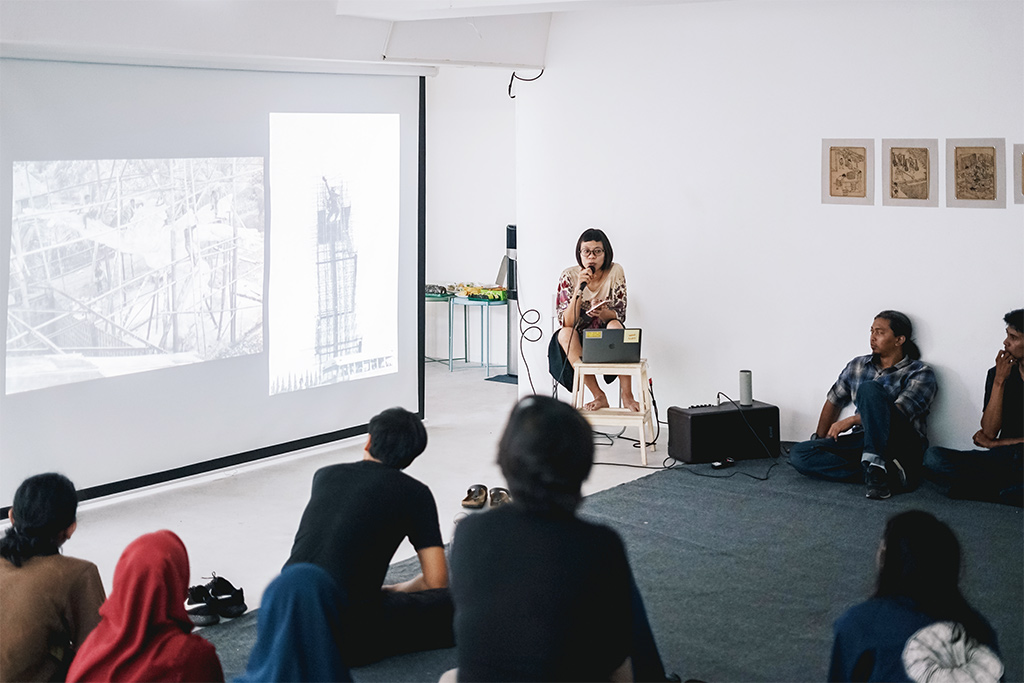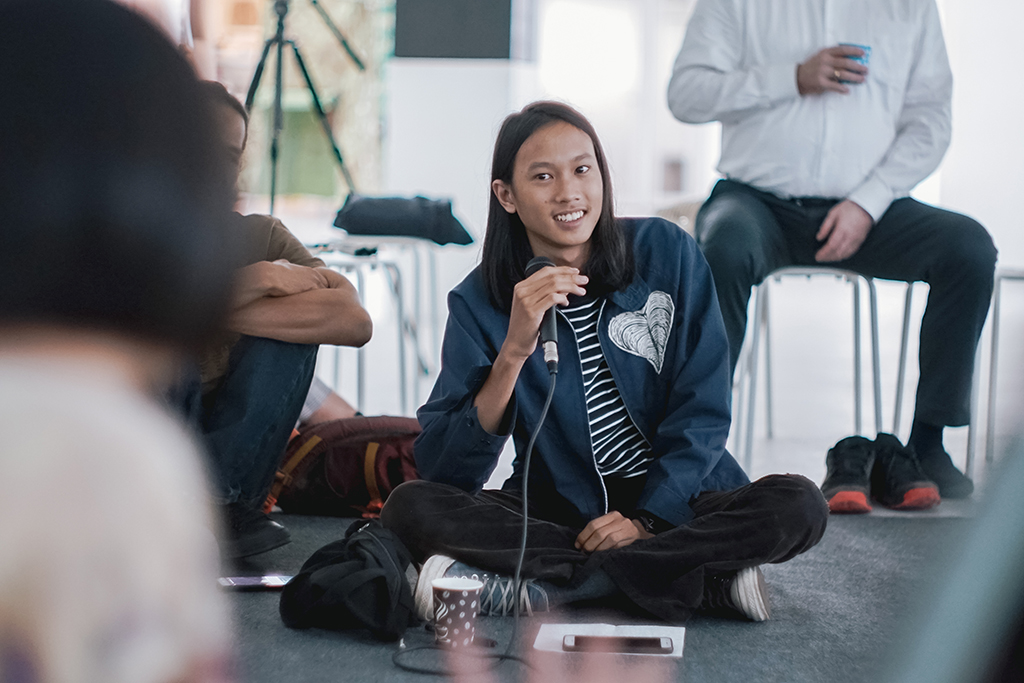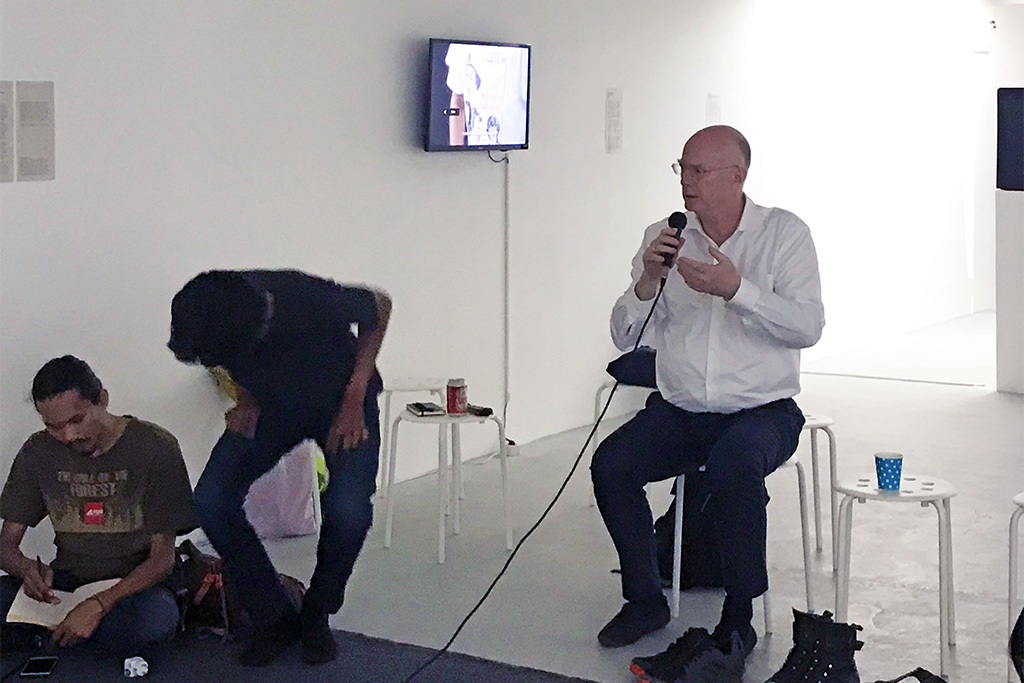
The archive exhibition Visualization of the National History: From, by and for whom? in the project space of Gudskul formed the research framework for the seminar (Re)Producing Fear and Joy: From, by and for whom?, which Grace Samboh created with a number of students at the Gudskul within the framework of Encounters.
In a joint teaching and research process that began on 7 October and consisted of several workshops, the students were asked to develop a series of podcasts, which critically examine selected dioramas by Edhi Sunarso in the National Monument and offer alternative narratives about these events as audio guides. In addition to this work on the podcasts, a series of seminars taught at Gudskul within its Articulation and Curation department was designed to deepen and apply critical artistic and curatorial practice. Based on their research on the constructions of Indonesian representations of history, the students were to learn to confidently formulate their own view of things artistically, curatorially, and personally.
In addition to Grace Samboh as the head of the course, curator Vera May, with her contribution Symbols from Time to Time in Southeast Asia, and sound artist Jati Andito (on audio-based art productions) also taught in the seminar.
The participating students were: Ratih PN Ardianti, Jennifer Augusta, Duta Adipati, Laksmi Lilu Herlambang, Gusmarian, and Ahmad Hilal.
One highlight of the seminar series (Re)Producing Fear and Joy: From, by and for whom? was an event with presentations and discussions on 23 October at Rubunah Underground Hub, where the exhibition FOMO/JOMO, curated by the collective Hyphen— took place.

Grace Samboh introduced the topic of Edhi Sunarso’s dioramas and explained her curatorial concept for the project to the audience, which included Stefan Dreyer, director of Goethe-Institut Jakarta, and Chương-Đài Võ from Asia Art Archive Hongkong.
Students of the seminar presented their research approaches and the working status of their podcasts.



Christian Hiller from the Berlin team expanded the context with a lecture on the political dimensions of the Bauhaus, thus demonstrating that modern architecture and art in Germany should be seen in interplay with the political conditions of the country.

Lyno Vuth, co-curator of the SEAM Space in Phnom Penh, presented the work of his Phnom Penh-based art initiative, Sa Sa Art Projects, which was created in the White Building, a modernist architecture ensemble that was recently demolished. His lecture focused on the involvement of White Building residents in artistic and curatorial workshops as well as other formats of learning and cooperative practice aimed at the education and self-empowerment of the residents and participating communities.

Particularly in the joint discussions following the presentations, a fruitful dialogue took place on parallels and contrasts between the various artistic, creative, and curatorial approaches and their possibilities to foster social empowerment. With regard to the specific theme of the seminar, it was argued that the relationship between visual narration and written history is very special in the multicultural country of Indonesia, where hundreds of different languages are spoken. Less the written text than the spoken word and the imagery take a central place in the transfer of knowledge. This is why the use of visual dioramas has such a strong impact on the construction of knowledge in the country. The rulers, however, have sometimes been irresponsibly manipulative in their presentation of history.


